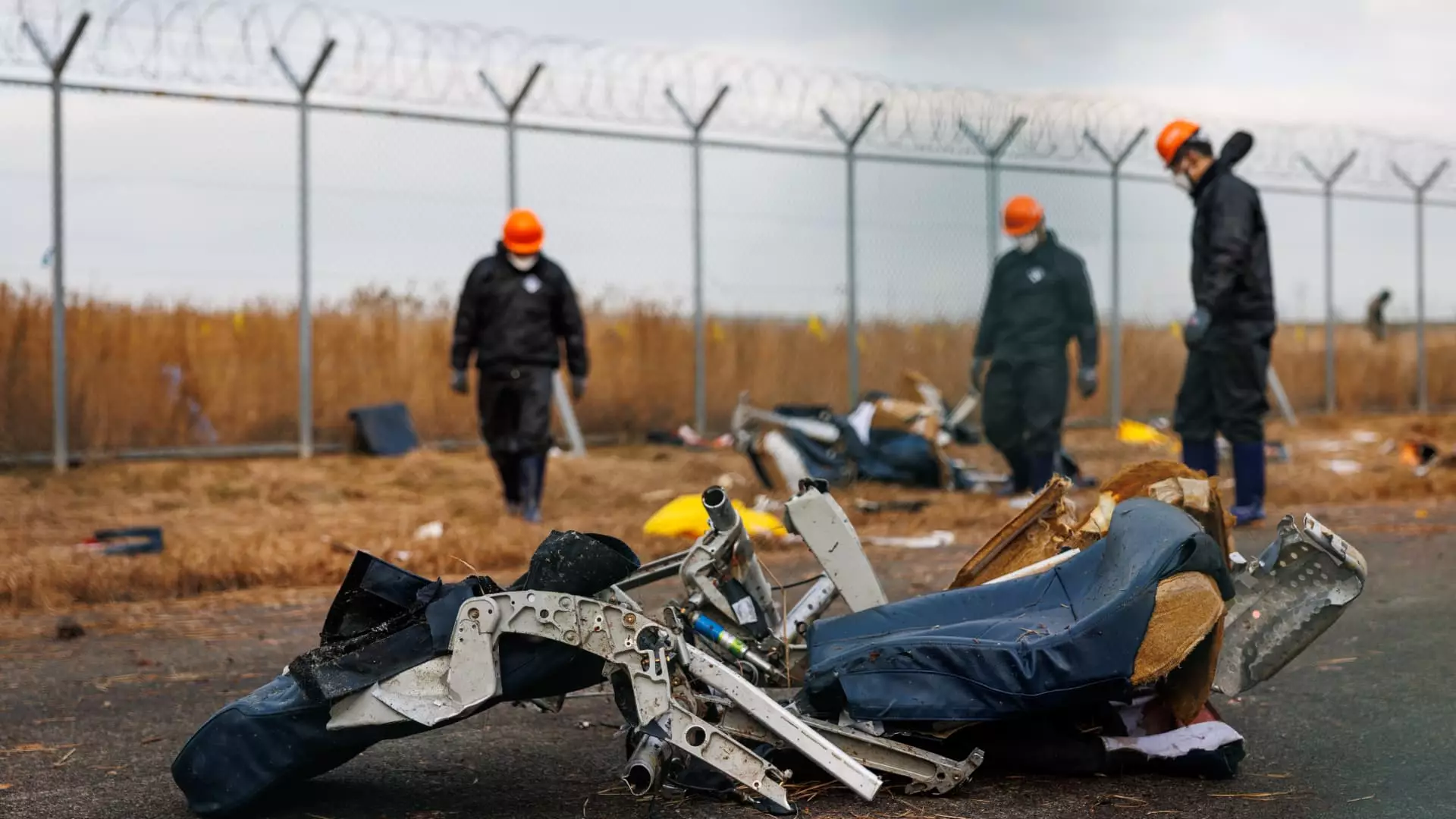The recent crash of a Jeju Air flight involving a Boeing B737-800 model resulted in the tragic loss of 179 lives out of the 181 people on board, raising alarms not only within the airline industry but also among regulatory bodies around the world. The disaster occurred at Muan International Airport in South Korea, where the aircraft landed without deploying its landing gear, leading to a devastating outcome as it skidded off the runway and collided with a concrete wall. The incident has since sparked a wave of safety inspections and scrutiny towards both the aircraft model and its operators.
In the immediate aftermath of the crash, Boeing’s shares took a substantial hit, plummeting nearly 5% in premarket trading as investors reacted to the potential implications of the incident. By 6:10 AM ET, shares managed to stabilize, ending 4% lower. This financial volatility underscores the pervasive anxiety in the market—an anxiety amplified by past safety issues associated with Boeing’s aircraft, particularly the notorious B737-Max series. Investors are acutely aware that any connection between the crash and broader operational concerns could lead to far-reaching consequences for Boeing’s reputation and financial standing.
In light of the accident, South Korean authorities, led by Acting President Choi Sang-mok, mandated an emergency safety inspection of the entire airline operation system. The Ministry of Land, Infrastructure, and Transport (MOLIT) announced plans for a “comprehensive special inspection” specifically targeting the B737-800 model. Such government oversight is essential in determining not only the cause of the crash but also ensuring that regulatory compliance is maintained across the industry. This level of scrutiny may become crucial in addressing the surrounding uncertainties related to aircraft safety and operational protocols.
Preliminary reports emerging from the MOLIT briefing shed light on the cockpit communications prior to the crash. The pilot reportedly indicated a “bird strike” shortly after a warning from the airport’s control tower about bird activity in the area. This has led investigators to consider the role of wildlife hazards in aviation safety, especially in proximity to airports. Additionally, two black boxes from the aircraft have been recovered and are undergoing analysis, providing further data that may clarify the circumstances leading up to the tragic event.
The collaboration between South Korean authorities and U.S. agencies, including the National Transportation Safety Board (NTSB) and the Federal Aviation Administration (FAA), reflects the seriousness of the investigation and the importance of international cooperation in addressing aviation safety issues. The finding will not only influence public perception of the involved airline but also impact regulatory policies regarding environmental factors affecting flight safety.
The Jeju Air crash has thrust the spotlight on aircraft maintenance, operational safety, and emergency protocols—particularly concerning bird strikes. This incident shines a light on the need for fortifying regulations around wildlife management at airports. Ju Jong-wan from MOLIT emphasized the necessity of reviewing compliance with maintenance guidelines and taking proactive measures against bird-related incidents, especially in areas with new airports under construction.
Furthermore, the spotlight on Jeju Air, the largest operator of the B737-800 with a fleet of 39 jets, raises questions about the level of oversight from both the airline and regulatory authorities. The impact on Jeju Air’s stock price, which experienced an 8.65% drop following the crash, adds a financial dimension to this crisis. The airline’s management has vehemently denied any mechanical faults or safety lapses, insisting on their commitment to maintenance, yet the incident continues to strain their operational credibility.
The Jeju Air crash serves as a potent reminder of the critical need for rigorous safety standards in the aviation industry. As investigations progress, it is imperative that insights gleaned lead to actionable improvements in regulations concerning aircraft safety and wildlife interactions at airports. The aviation industry must learn from this tragedy to prioritize passenger safety above all else, restoring confidence in not only Boeing’s aircraft but also in the operational integrity of airlines worldwide.

